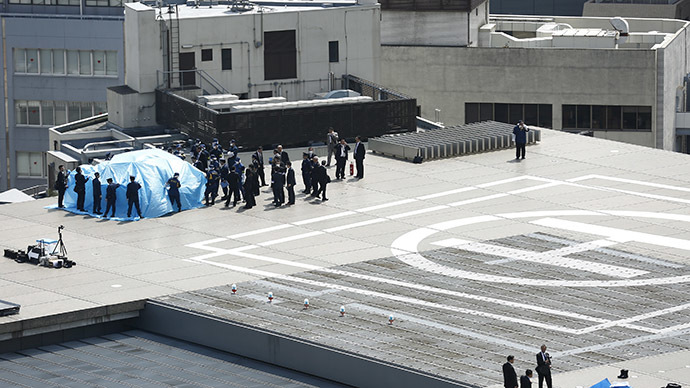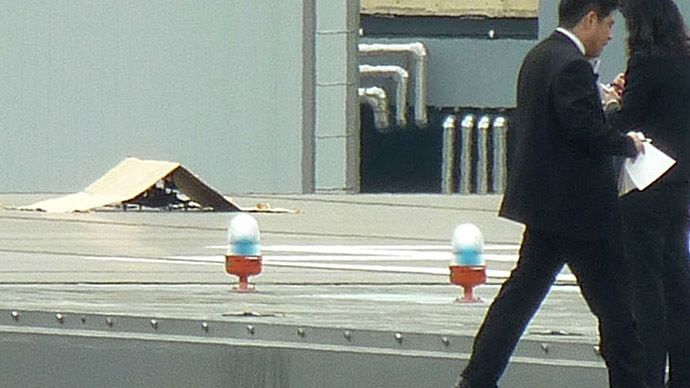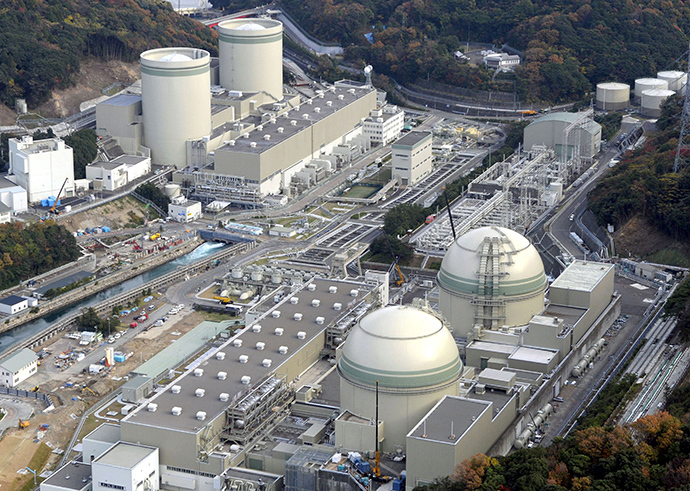‘Protest against nuclear policy’: Japan’s radioactive drone pilot turns himself in

A 40-year-old Japanese man has taken responsibility for launching a drone with radioactive material that landed on the roof of the office of Prime Minister Shinzo Abe. He said he took the course of action to protest the government’s nuclear policy.
READ MORE: Radioactive drone found on Japan PM’s office roof
The man turned himself in at a police station in Fukui Prefecture
- nicknamed Japan’s ‘nuclear corridor’ because it contains 14
reactors lined up along its coast - sources close to the
investigation told Kyodo news agency on Friday.
The self-confessed drone owner said his actions were provoked by
the gradual restart of the country’s 48 nuclear reactors, which
is scheduled by the government to commence this summer, despite
surveys showing significant public opposition.

A Chinese-made Phantom drone was found near the helicopter-landing pad above Abe’s office on Wednesday. However, it could have been there for several days before it was eventually discovered. The 50 cm diameter remote controlled device was clutching a water bottle containing liquid with trace amounts of cesium - a radioactive compound.
READ MORE: Pumps at Fukushima plant halted, toxic water leaking into ocean - TEPCO
The suspect said the cesium came from sand he picked from a beach near the Fukushima Daiichi nuclear power plant, which suffered multiple reactor meltdowns following the earthquake and tsunami in March 2011.
The cesium levels were too low to cause any danger to humans, and it was below the exposure experienced by those flying inside commercial planes. The drone may have remained on the rooftop for an extensive period of time, if it had not been spotted by an employee giving a tour of the building to potential recruits.
According to Kyodo, the police are now reviewing the validity of the drone operator’s claims.

The ease with which a drone that could have been carrying a far
more deadly cargo breached the security of the country’s most
powerful elected official has resulted in a shake-up of Japan’s
loose laws on unmanned aerial vehicles (UAVs).
Japan’s Chief Cabinet Secretary Yoshihide Suga described the
situation as a potential “grave crisis,” saying drones
"could have a substantial impact on public safety and privacy
protection, depending on how they are used."
READ MORE: Japan drafting new law to compete with US drones
Among the suggestions touted by politicians are the introduction of a licensing system and compulsory insurance on drones, as well as a ban on flying them over sensitive locations.
READ MORE: Off-duty drunk federal employee flew drone over White House - report
Suga said that the new legislation would come in to effect by the
end of the current Diet session in June.
The US went through a similar spurt of chaotic introspection
after a drone landed on the White House lawn in January this
year. A drunk official located in a nearby building was operating
it.
The US Federal Aviation Administration has been predicting an
explosion in UAV use, but has struggled over the past several
years to develop legislation that would take advantage of the low
cost and convenience of drones, without creating innumerable
public hazards.
READ MORE: Jail bird: Drone crashes into prison wall attempting to deliver drugs, phone & weapons












